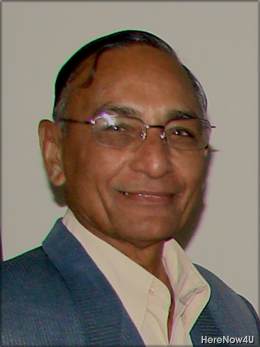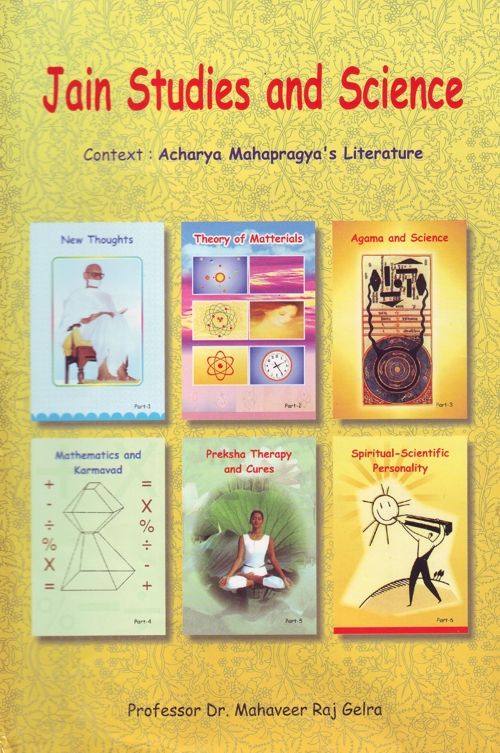1. Neither Ultimately Eternal, nor Entirely Destructible -
The concept of matter being a 'transformed eternity' may be newly accepted by the science, but it is one of the fundamentals of Jain Philosophy. Out of the six mattereals (dravyas), the highest activity and diversity is seen in pudgals (matter). The matter can be created (from energy), destructed (to energy), transformed (converted physically) and transacted (moved in space-time) but the resultant sum of pre and post transformation masses and the mass-equivalent of energy remains unaltered in the Lok of which we are a part.
Mass + Mass-equivalent of Energy = Finite Constant
Definition:
Mahapragya writes in Bhagwati-Bhashya -
- matter can change physically - Transformed
- matter cannot disappear as non-entity - Eternal
These lead to two very interesting corollaries.
Corollary-1:
If matter has to exist, the extent of Universe (Lok) has to be finite. Unlike in Alok which has infinite extent as per Jain teachings, matter contents become zero.
Corollary-2:
Jains propound that all activities in Universe are cyclic in nature. So is the time - ara or era. The conversion of entire matter into energy brings about the catastrophic end while the reformation of matter from concentrated energy (scientists today may love to call it Big bang) restarts the next cycle. While the time between start to end may be finite, the repetition of cycles remain eternal as matter cannot become a non-entity.
Transformation of matter:
Law of Conservation of Mass was first propounded by a famous scientist Lavoisier in 1789. According to him the net mass of the matter present in the universe remains unchanged. Matter can change its form but cannot be entirely destructed or newly created. Normally, in our day to day experience, we see matter changing various forms wherein it appears to have been destroyed, but factually it is only transformation from one form of matter to another. Lavoisier cited a very interesting example to explain - 'coal burning to ashes'. Apparently coal seems to have been destroyed but actually it has converted into two forms namely, solid ash and gaseous Carbonic acid formed by the combination of atmospheric Oxygen and Carbon present in the coal.
Similarly, we see rusting of Iron. The rust is not a newly created substance; it is just conversion of Iron into its oxy-hydrate by the action of water-vapour and oxygen present in the air on the surface of iron object.
Many a times, matter does not undergo form transformation but changes its state keeping all physical attributes intact. One such example is that of a rice or wheat grain. Before being cooked it is said to be Vanaspati-Kaya, while after being heated, it transforms to Agni-kaya.
As science progressed and the studies were conducted in the fields of Light, Temperature and Magnetism, Law of Conservation of Energy was conceptualised. As more accurate measurements were carried out it was found that a very miniscule amount of pre-reaction mass was missing from the total post-reaction masses. Both these laws failed to explain this tiny loss in mass in various chemical reactions. This limitation was overcome by the greatest scientist of our times - Einstein.
Mutual Transformation of Matter and Energy
As the form, mode or body of matter transforms, several invisible processes happen simultaneously, viz. absorption or release of energy. It was found that sifch a transaction of energy always takes place when a matter undergoes transformation. Einstein thus gave a historic concept that the matter can be converted to energy and vice-versa. Earlier prevalent concepts of matter and energy as independent entities were shattered by the famous equation of Einstein inter-relating the mass and the energy -
E = mc2, where
E = Energy
m = Mass
c = Velocity of Light (3x108 m/sec)
By virtue of the very high value of speed of light even a micro particle yields very high energy. According to the above equation a pound of coal, if fully converted to energy will generate 2 billion kilowatt of electricity.
This theory of modern day science came as a pleasant surprise to the students of Jainism. According to Jain philosophy, matter possesses infinite energy. When a macro-mass loses its physical attributes it tends to become massless, namely - Sukshma Pudgal - a packet of enormous energy. Even today the scientific emphasis is on the nano and pico technology (science of micro particles), which Jains already know as Pudgals (dions, quadons and octons). This correlation of modern thoughts (convertibility between mass and energy) and ancient Jain principles of Transformed Eternity (i.e., the net sum of mass and mass equivalent of energy is constant in the universe) by Mahapragya demonstrates his scientific temperament.

 Dr. Mahavir Raj Gelra
Dr. Mahavir Raj Gelra

